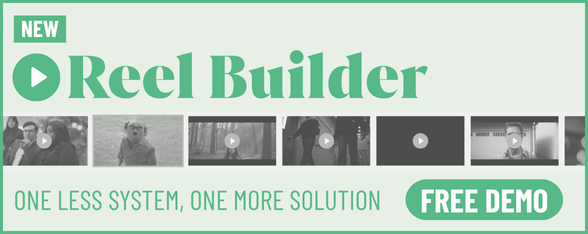
Up the Mountain: The Strategic Approach to Mapping the Customer Journey

Janey Diuguid is a strategist with an ability to detect the invisible threads that connect consumer behaviour to cultural momentum – then weave them into frameworks that drive growth.
For more than 12 years, she has shaped messaging and brand strategy across industries, transforming market complexities into elegant strategic solutions.
Janey’s superpower lies in uncovering authentic insights for impactful campaigns that feel both inevitable and surprising.
LBB> What do you think is the difference between a strategist and a planner? Is there one? And which description do you think suits the way you work best?
Janey> The line between planner and strategist is so blurry. Both are cartographers mapping the customer journey, just with different compasses.
Strategists ask, "What mountain should we climb?" While planners determine, "Which path gets us there?" I've found the magic happens when you can toggle between both mindsets – synthesising a vision while simultaneously crafting the vehicles that will bring that vision to life.
LBB> We’re used to hearing about the best creative advertising campaigns, but what’s your favourite historic campaign from a strategic perspective? One that you feel demonstrates great strategy?
Janey> I love it when strategy can help a team break the rules. The Moldy Whopper campaign comes to mind. Imagine that pitch meeting: "We're going to show our signature product rotting."
That strategic alchemy – transforming a potential negative into a disruptive positive – is what happens when you identify the perfect intersection between consumer truth and brand differentiation.
LBB> When you’re turning a business brief into something that can inform an inspiring creative campaign, do you find the most useful resource to draw on?
Janey> I like to lean into contradiction and tension. The gap between how people see themselves and how they behave. The distance between cultural expectations and individual desires. These fault lines in human experience generate creative energy more powerful than any demographic data ever could.
The most inspiring briefs don't just understand the audience; they illuminate the contradictions that make them human.
LBB> What part of your job/the strategic process do you enjoy the most?
Janey> I love the very specific part of the creative briefing process where we get to illustrate the world of our target audience.
What’s inspiring them? What’s motivating them? What’s keeping them up at night?
It’s the piece that gives our team the confidence and understanding to take the creative position or brand opportunity and make it real.
LBB> What strategic maxims, frameworks, or principles do you find yourself going back to over and over again? Why are they so useful?
Janey> My north star is simple yet relentless: relevance and authenticity. Can we credibly own this? Does our audience genuinely care? If either value approaches zero, the product is worthless.
This equation forces brutal honesty about where a brand actually sits in people's lives versus where we wish it did.
LBB> What sort of creatives do you like to work with? As a strategist, what do you want them to do with the information you give them?
Janey> Creatives who like to yap! If a briefing doesn’t turn into a brainstorming gab session, then I haven’t done my job well.
I want them to find the contradictions in a brief and pick them apart with me. To me, the main idea of the brief is just a vantage point. Where we all end up looking is what we create together.
LBB> There’s a negative stereotype about strategy being used to validate creative ideas, rather than as a resource to inform them and make sure they’re effective. How do you make sure the agency gets this the right way round?
Janey> I think that’s where strategy needs to participate throughout creative development, not just the ceremonial beginning and evaluative end. We ensure the strategic thread remains unbroken.
The best strategists don't just write briefs; they maintain the strategic integrity throughout the creative lifecycle.
LBB> What have you found to be the most important consideration in recruiting and nurturing strategic talent?
Janey> Strategists who balance intellectual rigor with creative empathy. The strongest strategic minds aren't just analytical powerhouses; they're storytellers who can move fluidly between data and human narratives.
We need to nurture this by creating space for intellectual exploration beyond marketing literature.
LBB> In recent years it seems like effectiveness awards have grown in prestige and agencies have paid more attention to them. How do you think this has impacted on how strategists work and the way they are perceived?
Janey> Let’s be real, agencies love to celebrate their work. When you create something beautiful, you want to show it to everyone, right?
But to marry that impulse with whether or not we actually moved the needle for the client seems like a necessary evolution.
Effectiveness awards have elevated strategy as a discipline and created a stronger call for strategists, media planners, and creatives to ‘begin with the end in mind’ which can produce more specific and efficient campaigns.
LBB> Do you have any frustrations with planning/strategy as a discipline?
Janey> I think too often we feel we need a ‘right’ answer, or for the data to point to something specific – but we know that numbers (like people) are full of contradictions.
LBB> What advice would you give to anyone considering a career as a strategist/planner?
Janey> Stay curious. The best strategists aren't just experts in marketing but scholars of human existence – drawing connections between behavioural economics, literary theory, cultural anthropology, and emerging technologies.















